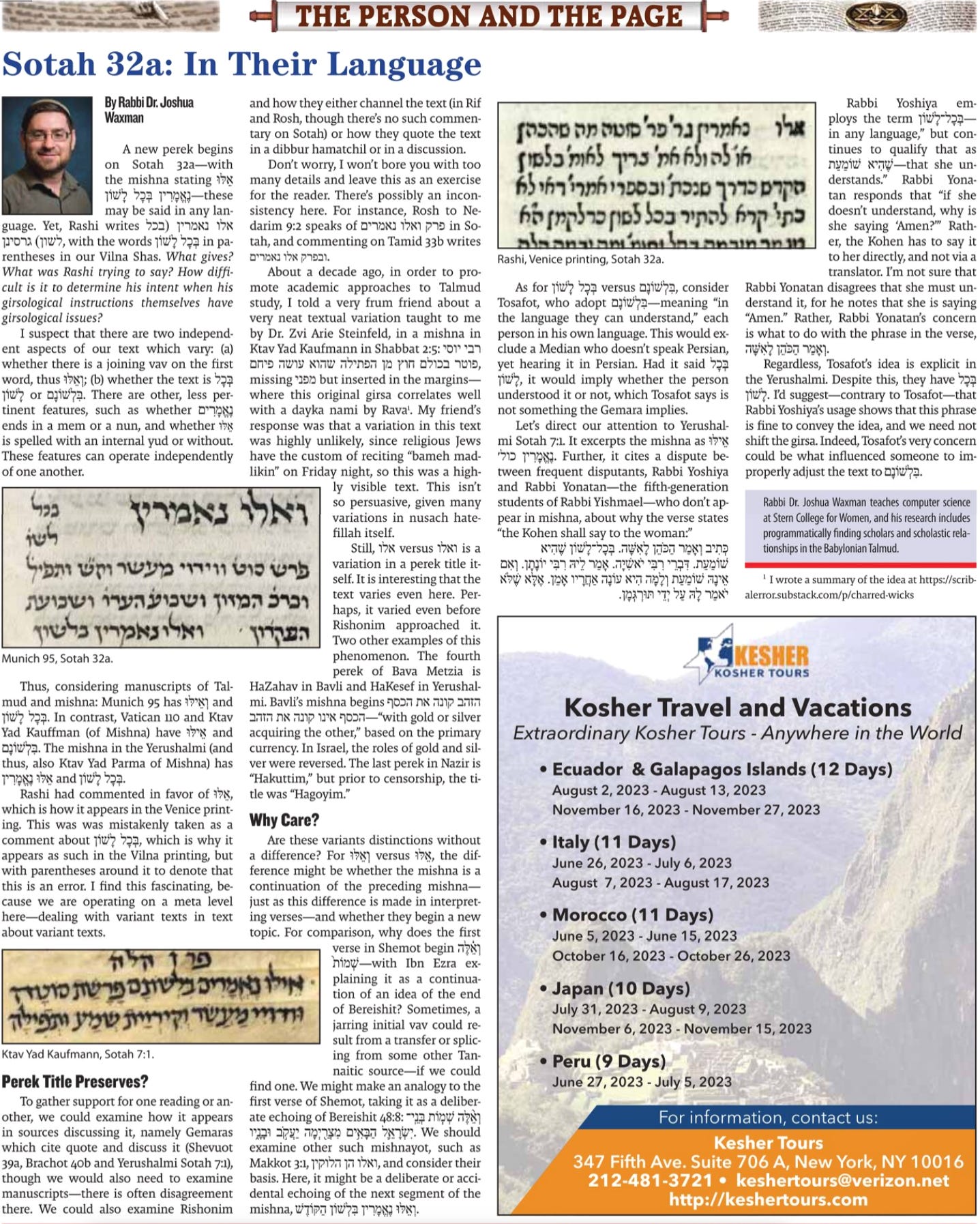Article Summary: In Their Language
Here is a quick rundown of my article from this past Shabbat, on Sotah 32a. It is available on the Jewish Link website, in flipdocs format, and paywalled here (with a few more images).
Or click on this image to make it larger.
The quick overview follows.
The opening Mishnah begins Eilu neemarin. Or maybe it is Ve’eilu neemarin. It continues bechol lashon. Or maybe it is bilshonam.
Rashi seems to establish the girsa both as “Eilu”, and as bechol lashon. However, that second portion is in parenthesis in our Vilna printing. And, the Venice printing omits it.
So Rashi’s only concern is eilu vs. ve’eilu. Eilu makes sense since it is not a continuation of any topic in the preceding Mishnah. Unless it is a transferred Tannaitic segment somehow. I draw parallels to the beginning of Shemot, ve’eileh Shemot benei Yisrael, which besides being a continuation of the preceding sefer, also is a copy of the beginning of a parallel verse.
Meanwhile, you can see Tosafot who argue it should be bilshonam. Because the meaning of bechol lashon would be even if the kohen speaks Persian and she doesn’t understand it. Only if it is her own language, which she understands, would it be valid.
We can track across different manuscripts what happens to each of these features, independently. And we can see how it appears in the two sugyot that quote the Mishnah. Though we would then examine the manuscript variants in those sugyot as well. And we can track how Rishonim discuss it.
Another fine point is that this starts the perek, and we might expect a perek title, often cited, to escape such corruption. But I name two other perakim which had similar flux.
Finally, I point out how changing to bilshonam seems unnecessary. The Yerushalmi’s Mishnah, and the gemara’s discussion there, seem to assume בכל לשון means שהיא שומעת. Rabbi Yonatan and Rabbi Yoshiya disagree there as to the implication of a specific pasuk, but they both appear to agree entirely with Tosafot’s assumption that she needs to understand it. Either from a pasuk, or from her saying Amen Amen. This issue that Tosafot had was likely the genesis of this alternative girsa of bilshonam, making it more explicit. But it would mean the same regardless.
I also had a follow-up post about other related variants having to do with her understanding, and the pasuk used to deduce it. See here:




